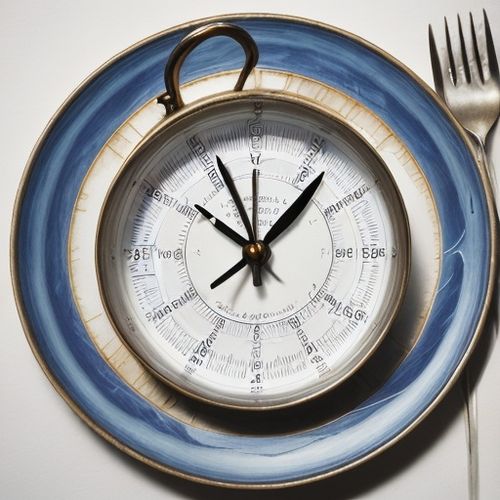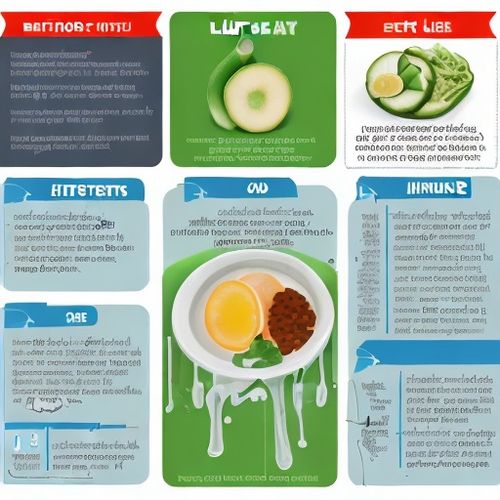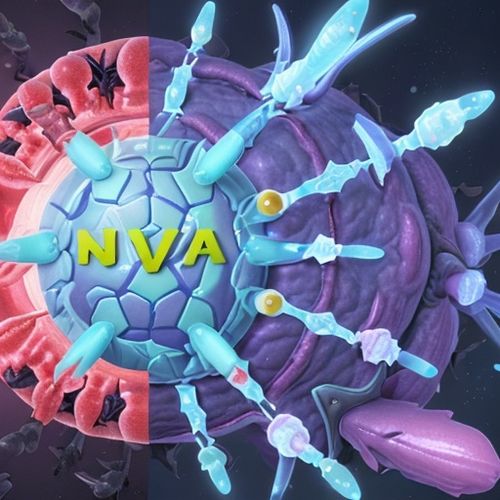As we navigate the journey of midlife, many of us encounter a common and often unwelcome change: the emergence of a spare tyre around the middle. This accumulation of belly fat, particularly the dangerous visceral fat that lies deep within the abdominal cavity, can pose significant health risks, including an increased likelihood of developing type 2 diabetes, heart disease, and certain cancers. While there is no magic diet that can selectively target weight loss in a specific area, certain foods and dietary habits can help mitigate the risk of developing excess belly fat. Here are six key strategies backed by scientific research and practical advice to help you maintain a healthy midsection.
1. Eat Kimchi
Kimchi, a traditional Korean dish made from fermented cabbage, has garnered attention for its potential health benefits, particularly in reducing the risk of developing belly fat. A major study from 2024 conducted by researchers at Chung Ang University in South Korea revealed that consuming up to three servings of kimchi per day could significantly lower the likelihood of becoming overweight or developing dangerous visceral fat. This finding is particularly significant given the well-documented link between belly fat and metabolic diseases like diabetes.
So, how does kimchi work its magic? The answer lies in its probiotic content. Kimchi is rich in beneficial bacteria from the Lactobacillus family, which are known to enhance gut health. A healthy gut microbiome has been increasingly linked to weight control and overall metabolic health. The probiotics in kimchi may help regulate digestion, improve nutrient absorption, and even influence the way our bodies store and burn fat.
If the idea of incorporating kimchi into your daily diet seems daunting, consider starting with other probiotic-rich foods like Greek yogurt. Opt for high-quality, strained Greek yogurt with no added sugars or artificial ingredients. Greek yogurt is an excellent source of probiotics and can be enjoyed in various ways, such as with fresh berries and granola for breakfast, or as a healthier substitute for mayonnaise in sandwich fillings.
Here’s a simple and delicious recipe to get you started:
Healthy Greek Yogurt Potato Salad
- Boil 500g of mini potatoes in their skins until tender (around 10 minutes), then drain and place in cold water.
- Mix together 4 tbsp plain Greek yogurt, 1 tsp Dijon mustard, a squeeze of lemon juice, 2 finely sliced spring onions, and season with salt and pepper.
- Drain the potatoes, cut in half, and place in a bowl.
- Add the yogurt mixture and toss well to coat fully.
- Garnish with chopped chives before serving.
Recipe extracted from "Supercharge Your Diet: Ten Easy Ways to Get Everything from Your Food" by Sam Rice.
2. Cut ‘Free’ Sugar
Sugar, particularly the type added to foods and beverages, has long been implicated in weight gain and obesity, especially around the midsection. "Free" sugars refer to those added to foods during processing, such as in sugary drinks, breakfast cereals, cakes, biscuits, and most processed foods. These sugars contribute to excess calorie intake and can lead to spikes in blood sugar levels, which, when not utilized for energy, are often stored as fat.
To combat this, it’s crucial to drastically reduce your intake of free sugars. However, this doesn’t mean you have to eliminate all forms of sugar. The natural sugars found in whole fruits are perfectly fine, as they come packaged with fiber and other nutrients that slow digestion and prevent blood sugar spikes. In fact, incorporating whole fruits into your diet can be a satisfying and healthy way to satisfy your sweet tooth.
Try this delightful and healthy berry crumble for dessert:
Healthy Berry Crumble
- Preheat the oven to 180°C.
- For the crumble topping, melt 50g coconut oil in a small saucepan over low heat.
- Remove from the heat and add 75g oats, 30g flaked almonds, 30g sunflower seeds, 70g wholemeal flour, 1 tsp cinnamon, and 4 finely chopped pitted dates.
- Place 500g frozen mixed berries in a single layer in a shallow baking dish and cover with the oaty topping.
- Bake for 25 minutes until the fruit is sticky and bubbling, and the topping is crisp and golden.
3. Pack in the Protein
Protein is a macronutrient that plays a vital role in maintaining and building muscle mass, but it also has benefits for weight management. An independent study published in the peer-reviewed journal BioMed Central found that a higher intake of quality protein is inversely related to abdominal fat. Quality protein refers to foods that are rich in the nine essential amino acids our bodies need to function optimally.
Excellent sources of quality protein include whole eggs, fish, legumes, nuts, lean meats, and dairy products. Plant-based options like soy, quinoa, buckwheat, chia seeds, and hemp seeds are also complete proteins, containing all nine essential amino acids.
Incorporating more protein into your diet can be as simple as starting your day with a nutritious breakfast. Try this delicious chia porridge:
Chia Porridge
- Place 250ml milk, 3 tbsp chia seeds, ½ tsp cinnamon, and ½ tsp vanilla extract in a small saucepan and bring to a boil.
- Reduce the heat and simmer for 10 minutes or until the mixture thickens to a porridge-like consistency, stirring occasionally.
- Top with sliced banana for added sweetness and texture.
4. Eat 30 Grams of Fiber
Fiber is a dietary component that offers numerous health benefits, including improved gut health, better appetite control, stable blood sugar levels, and lower cholesterol. The NHS recommends a daily intake of 30g of fiber, yet the average adult in the UK consumes only 19g. Increasing your fiber intake can help you feel fuller for longer, reducing the likelihood of overeating and promoting healthier digestion.
To boost your fiber intake, consider the following tips:
- Swap to wholegrain versions of bread, pasta, and rice.
- Keep the skins on potatoes.
- Snack on nuts (a portion size is 30g) and nut butters.
- Incorporate plenty of beans and lentils into your meals.
- Enjoy hummus with wholegrain crackers for a fiber-rich snack.
5. Drink Green Tea
Green tea is renowned for its antioxidant properties, and recent research suggests it may also play a role in reducing abdominal fat. A 2012 randomized controlled trial found that overweight participants who consumed a green tea beverage rich in catechins (a type of antioxidant) for 12 weeks experienced a significant reduction in visceral fat. Scientists believe that catechins may enhance fat metabolism, leading to weight loss.
If you’re not a fan of traditional green tea, matcha—a Japanese version of green tea with a higher concentration of catechins—can be a great alternative. Try this "super green" porridge recipe:
Matcha Porridge
- Place 50g oats, 2 tsp honey, a pinch of salt, and 250ml water in a pan and cook over low heat for 5 minutes until it begins to thicken.
- Dissolve 1 tsp of matcha powder in a little boiling water and stir well. Add to the porridge along with one small, mashed banana.
- Serve with a few blueberries sprinkled on top.
6. Get More Omega-3
Omega-3 fatty acids are well-known for their positive impact on brain health, but recent studies have also highlighted their potential role in reducing abdominal fat. Research suggests that a diet rich in omega-3 may increase metabolic rate and help regulate hunger and appetite, both of which are crucial for weight management.
Fatty fish like salmon, mackerel, and sardines are excellent sources of omega-3. If you’re looking for a simple way to incorporate more omega-3 into your diet, consider adding a tin of sardines to your weekly meal plan. Here’s a quick and tasty sardine toast topper recipe:
Sardine Toast Topping
- Mash up a tin of sardines in olive oil (drain off most of the oil first) with ½ a small red onion (finely diced), a small handful of chopped flat parsley leaves, 6 black olives (pitted and finely chopped), juice of ½ a lemon, and a dash of Tabasco or hot sauce.
- Mix well and serve on wholegrain toast.
A Holistic Approach to Midlife Weight Management
The journey to a healthier midsection is not just about targeting belly fat but adopting a holistic approach to nutrition and lifestyle. By incorporating foods like kimchi, reducing free sugars, increasing protein and fiber intake, drinking green tea, and enriching your diet with omega-3 fatty acids, you can create a balanced and sustainable plan for maintaining a healthy weight and reducing the risk of chronic diseases.
Remember, small changes can lead to significant results over time. Start with one or two adjustments and gradually incorporate more as they become part of your routine. Consult with a healthcare professional or registered dietitian to tailor these strategies to your specific needs and goals. With patience, consistency, and a focus on nourishing your body, you can successfully combat the midlife spare tyre and enjoy a healthier, more vibrant life.

By Sarah Davis/May 19, 2025

By Natalie Campbell/May 19, 2025

By George Bailey/May 19, 2025

By Lily Simpson/May 19, 2025

By David Anderson/May 19, 2025

By Olivia Reed/May 19, 2025

By Amanda Phillips/May 19, 2025

By Sophia Lewis/May 19, 2025

By Olivia Reed/May 19, 2025

By Emily Johnson/May 19, 2025

By John Smith/May 18, 2025

By Eric Ward/May 18, 2025

By Jessica Lee/May 18, 2025

By Jessica Lee/May 18, 2025

By Sophia Lewis/May 18, 2025

By Rebecca Stewart/May 18, 2025

By Emily Johnson/May 18, 2025

By Rebecca Stewart/May 18, 2025

By Megan Clark/May 18, 2025

By Megan Clark/May 18, 2025